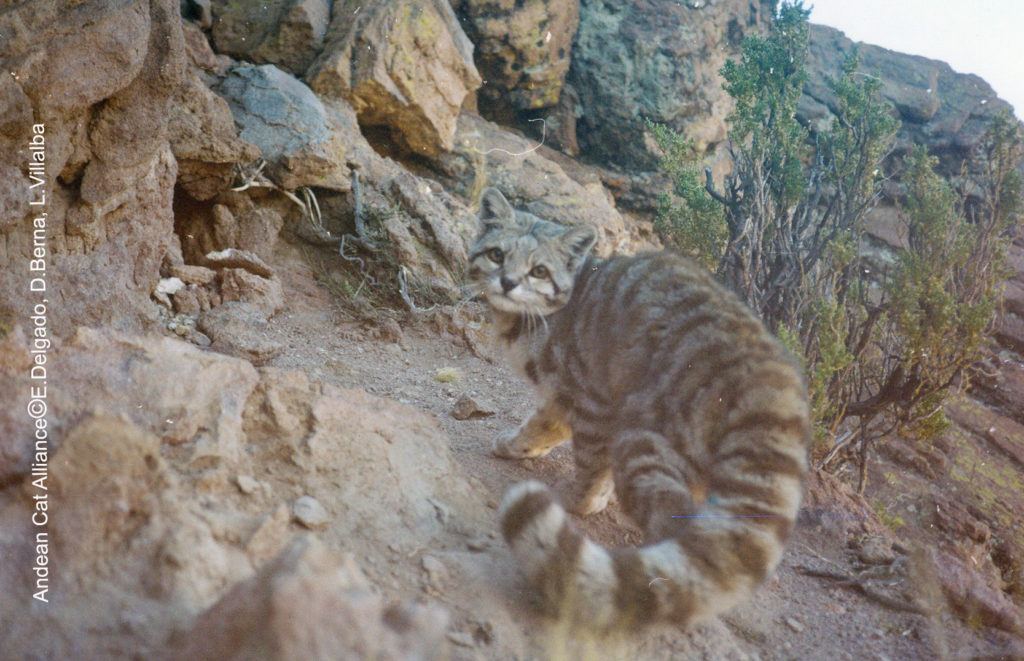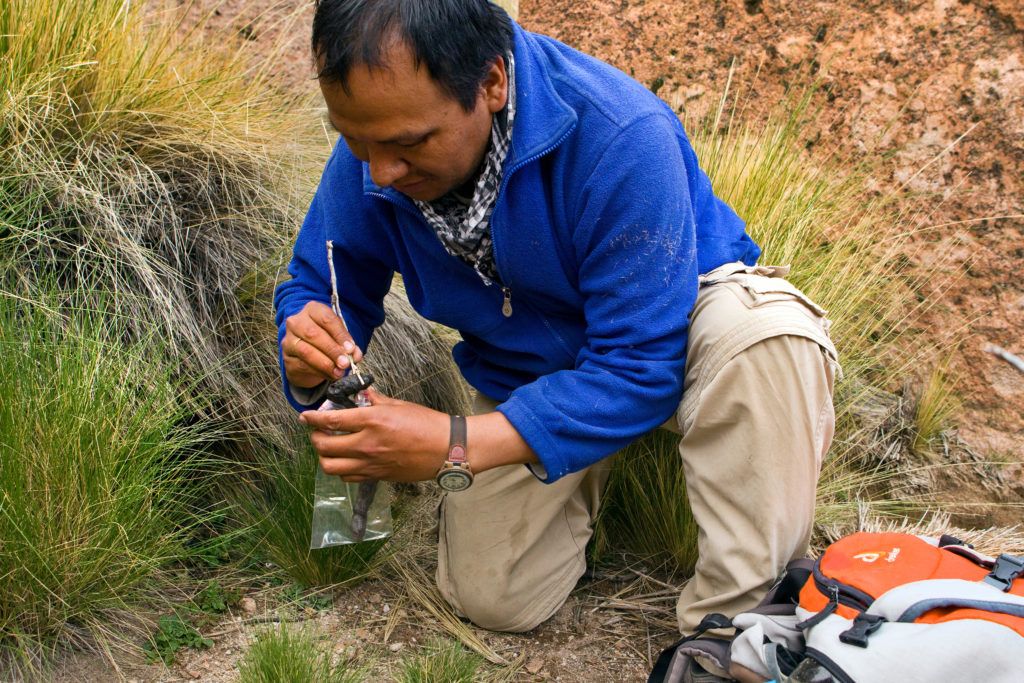The vizcacha, a small, beige rodent, watches Constanza and her team of conservationists from Andean Cat Alliance (AGA) warily from its spot on a rock, high up in Chile’s Andes mountains. Its long whiskers and rabbit-like ears anxiously twitch as it surveys the group. After hours of navigating steep cliffs and jagged rocks and weathering freezing temperatures to get here, the vizcacha was a welcome sight. As the Andean cat’s favorite food source, its presence signaled to the team that Andean cats may be close by.
Slightly larger than a house cat and sporting a bushy tail and mottled stone-colored fur, the Andean cat is the most endangered wild cat in all of the Americas; less than 1,400 adults are thought to remain. Andean cats reside in the mountains of Argentina, Bolivia, Chile, and Peru. They are sparsely spread out over such a vast range and blend so seamlessly with the dusty backdrop of the Andes, that Andean cats are almost impossible to spot in the wild. Because of their scarcity, AGA has devised many non-invasive techniques to track and study these cats without having to actually see them. Over the next few months, Constanza and her team will use these techniques, namely scat analysis and camera traps, to gauge the presence of Andean cats in the Arica y Parinacota Region of Chile; the data they collect will be added to AGA’s range-wide record of Andean cat populations.
A few feet ahead, the group spots a cave. Inside, the cave floor is littered with cat feces, some still fresh, indicating the presence of wild cats nearby. Constanza motions for the team to collect samples—these will be sent to their lab for analysis—and heads outside to set up a camera trap. In the coming weeks, footage gathered from all of the camera traps they place will help AGA to document the number of cats living in the area. Camera trap footage also helps AGA to document the movements of individual cats by identifying the distinctive spots on their coats, unique to each cat.
Additionally, conservationists can glean a tremendous amount of information from scat analysis. By extracting DNA from Andean cat feces and studying its unique genetic sequence, AGA can determine the sex of a cat and if it belongs to an isolated or a connected population. Isolated populations are prone to extinction as their movements are limited to a specific area, making it hard for Andean cats to breed and further their species. So, when isolated populations are discovered, it is important for AGA to identify pathways to connect these populations, removing any barriers blocking these corridors.
As Andean cats have low genetic diversity, preserving all populations and finding safe corridors that will allow them to move freely may be the key to long-term conservation of the species. The information Constanza and her team gather in real time is critical in helping AGA achieve this goal.



